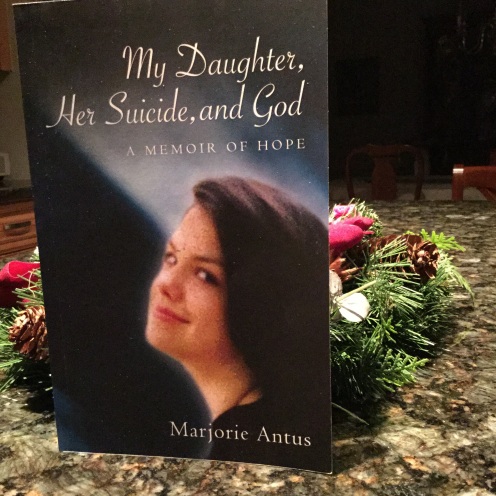Yesterday, I was talking with a friend whose husband died two months ago of cancer. Remarkably positive in early bereavement and not someone given to denial, she commented that grief for my daughter Mary must continue to be difficult. In fact, she said it must be the worst, most unimaginable kind of grief. I wanted to reply that losing a teenage daughter to suicide has required a steady healing effort over nearly two decades, but words failed. What came forth was a small grief burst, an outcropping of emotion that I thought had been dispensed with years ago.
In many ways, grief for Mary has been routed: I’ve gotten used to her absence; I’ve found a place for her in my emotional life that has allowed me to go on; I don’t think of her with sadness anymore, but, rather, with something like puzzlement that tends to be more intriguing than anything.
But grief–that small, cold stone–continues to show itself from time to time, despite the healing. What’s changed since yesterday is that I’m now trying to honor not only its presence but also its life-givingness.
“Grieving is not just something that we do on sad occasions,” writes Richard Rohr, OFM, Catholic priest and author. “It is a mode of existence that agrees to carry the sadness of things without denying or dismissing the pain as an accident. It is a way of living that incorporates dying. It is a way of remembrance that refuses to forget. It is not a maudlin, depressed, or self-pitying thing, but a way of ‘compassion’ that makes room for everything and holds on to nothing.”
For those bereaved by suicide who may be haunted their entire lives by “if onlys” and guilt, Rohr offers especially pertinent insight: “The grieving mode keeps us out of the fixing mode. The grieving mode keeps us beyond the explaining mode. The grieving mode makes the way of blaming useless and counterproductive. The grieving mode submerges us into a world deeper than words or control.” (“Foreword,” in Robert J. Miller, GriefQuest: Men Coping with Loss, Winona, MN: Saint Mary’s Press, 1996, 10.)
From what I’m learning, the grieving mode plunges us into the only world capable of transforming us, the world inside where God lives, the world where real healing–the messy, tearful, human kind–can occur.
